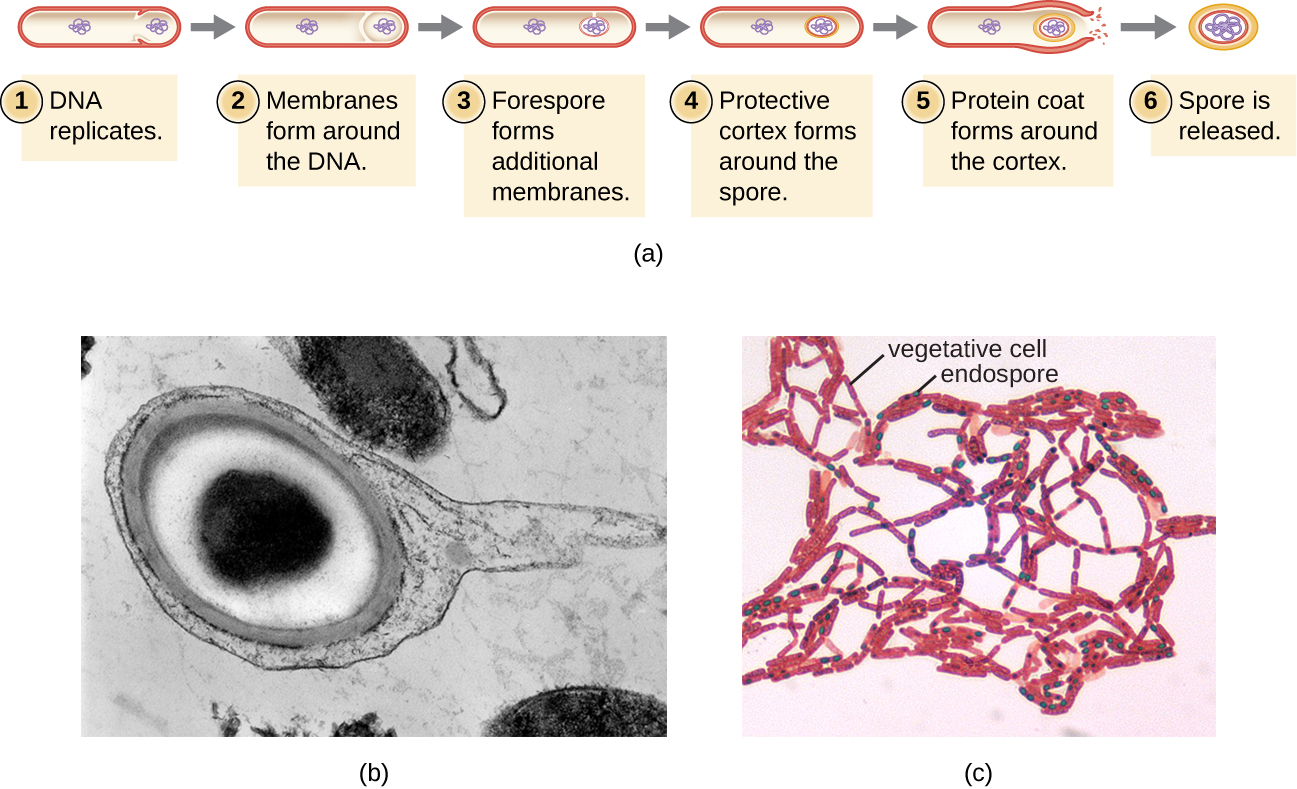| << Chapter < Page | Chapter >> Page > |
The process by which vegetative cells transform into endospores is called sporulation , and it generally begins when nutrients become depleted or environmental conditions become otherwise unfavorable ( [link] ). The process begins with the formation of a septum in the vegetative bacterial cell. The septum divides the cell asymmetrically, separating a DNA forespore from the mother cell. The forespore, which will form the core of the endospore, is essentially a copy of the cell’s chromosomes, and is separated from the mother cell by a second membrane. A cortex gradually forms around the forespore by laying down layers of calcium and dipicolinic acid between membranes. A protein spore coat then forms around the cortex while the DNA of the mother cell disintegrates. Further maturation of the endospore occurs with the formation of an outermost exosporium. The endospore is released upon disintegration of the mother cell, completing sporulation.

Endospores of certain species have been shown to persist in a dormant state for extended periods of time, up to thousands of years. F. Rothfuss, M Bender, R Conrad. “Survival and Activity of Bacteria in a Deep, Aged Lake Sediment (Lake Constance).” Microbial Ecology 33 no. 1 (1997):69–77. However, when living conditions improve, endospores undergo germination , reentering a vegetative state. After germination, the cell becomes metabolically active again and is able to carry out all of its normal functions, including growth and cell division.
Not all bacteria have the ability to form endospores; however, there are a number of clinically significant endospore-forming gram-positive bacteria of the genera Bacillus and Clostridium . These include B. anthracis , the causative agent of anthrax , which produces endospores capable of survive for many decades R. Sinclair et al. “Persistence of Category A Select Agents in the Environment.” Applied and Environmental Microbiology 74 no. 3 (2008):555–563. ; C. tetani (causes tetanus ); C. difficile (causes pseudomembranous colitis ); C. perfringens (causes gas gangrene ); and C. botulinum (causes botulism ). Pathogens such as these are particularly difficult to combat because their endospores are so hard to kill. Special sterilization methods for endospore-forming bacteria are discussed in Control of Microbial Growth .
Structures that enclose the cytoplasm and internal structures of the cell are known collectively as the cell envelope . In prokaryotic cells, the structures of the cell envelope vary depending on the type of cell and organism. Most (but not all) prokaryotic cells have a cell wall , but the makeup of this cell wall varies. All cells (prokaryotic and eukaryotic) have a plasma membrane (also called cytoplasmic membrane or cell membrane ) that exhibits selective permeability, allowing some molecules to enter or leave the cell while restricting the passage of others.

Notification Switch
Would you like to follow the 'Microbiology' conversation and receive update notifications?